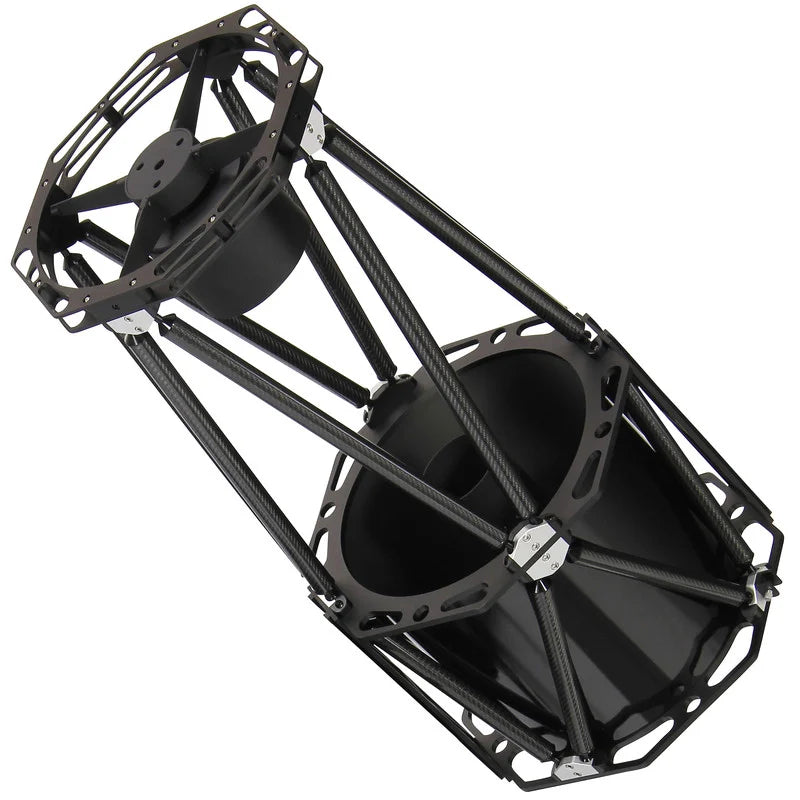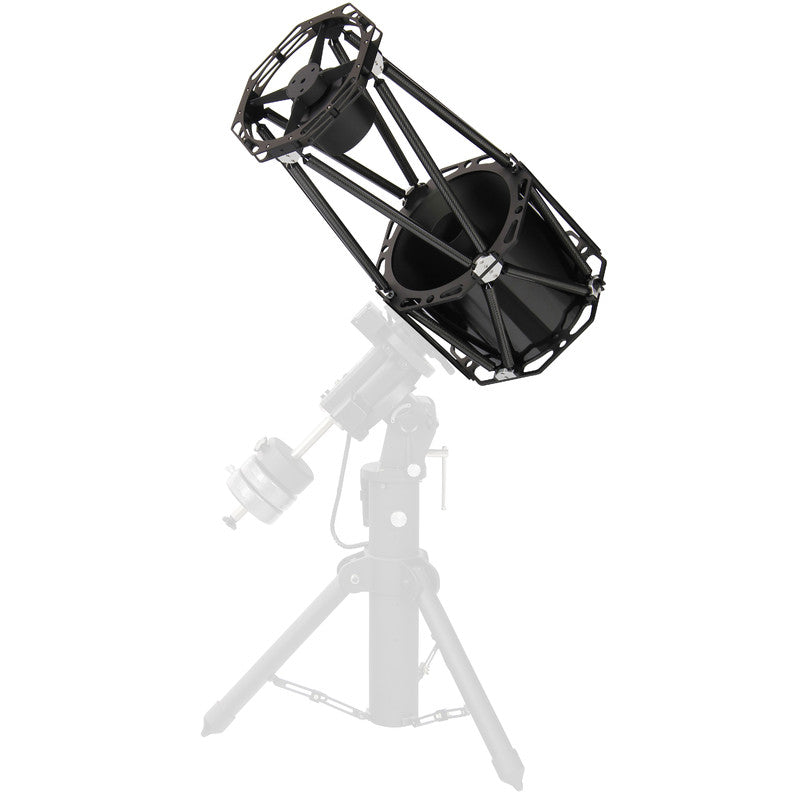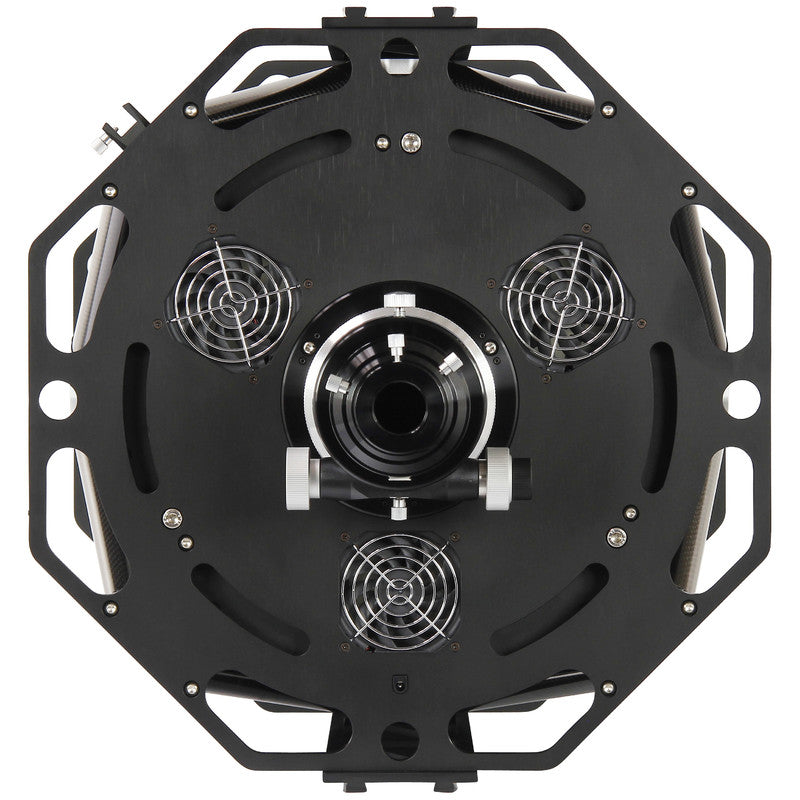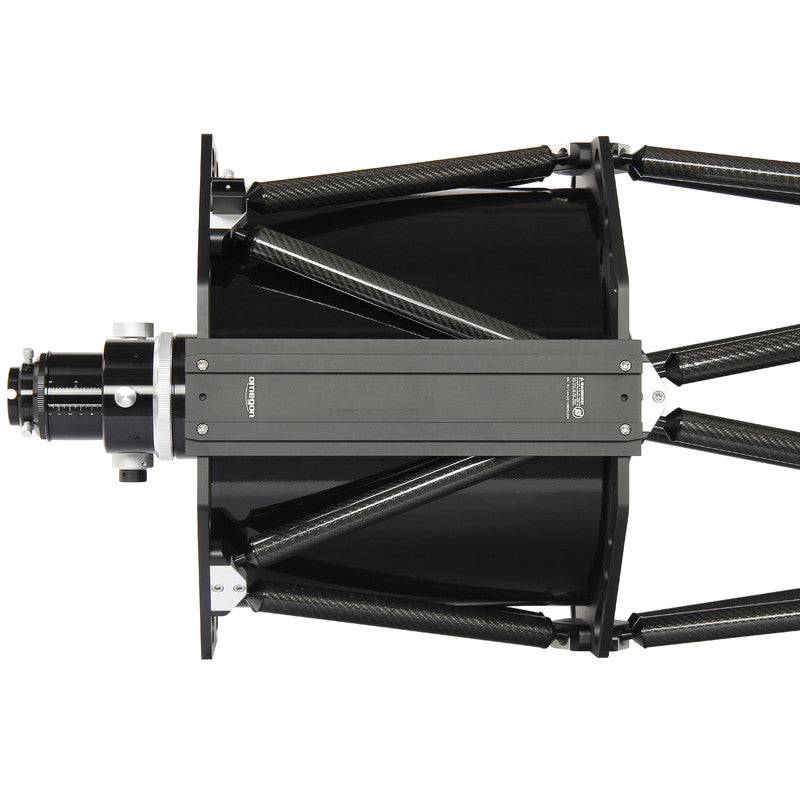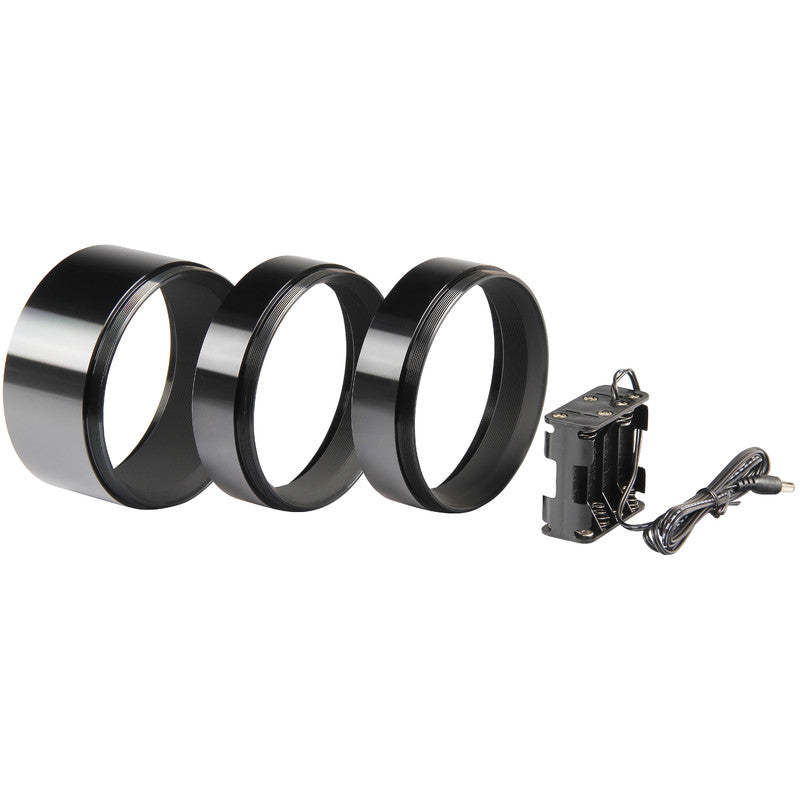Hai bisogno di informazioni sul prodotto?
Description
Omegon RC Truss Carbon telescope: professional astrophotography for your observatory
Is astrophotography your passion and are you looking for the right telescope for your observatory? Ritchey-Chretien telescopes combine large mirror optics with near-perfect image reproduction. In fact, two hyperbolic mirrors guarantee a vast, illuminated and coma-free field of vision, in a compact structure. The result: perfect stars right to the edges. This is why numerous institutes and professional observatories rely on this system.
Choose professional technology for your dome too! Omegon RC telescopes are so well designed that even the smallest observatories have enough space.
The advantages at a glance:
- Hyperbolic mirror: extremely sharp image reproduction, large field of view without correctors
- Quartz mirror: stable focus, does not require subsequent adjustments - the image remains sharp
- Ideal for large format CCD cameras: approximately 60 mm of illumination
- Carbon truss tubing: Reinforced carbon truss system
- High reflectivity: 92 - 94% dielectric reflective treatment for bright, contrast-rich astrophotography and observations
- Fast cooling thanks to the open structure
- High-performance electric fan: minimizes tube seeing and accelerates optics cooling
Hyperbolic mirror for better image reproduction
RC telescopes are equipped with a primary and a secondary mirror, both hyperbolic and not spherical as in Schimdt-Cassegrain systems. This makes the RC design clearly superior: the optics offer a wider field of view and the image has significantly less aberrations.
High image quality over a wide field of view: this is the ultimate goal of an RC telescope, which therefore represents the instrument par excellence in astrophotography. It's also why RC optics are the ideal choice for large CCD cameras. This means your photos will be sharp right to the edges, even without concealer. All this leads to exceptional images of the starry sky.
Particularly suitable for wide spectral ranges
An RC telescope has no lenses in the optical path. This is a great advantage! In fact, it does not present refraction effects such as chromatic aberrations or dispersions. The usable spectral range in addition to visible light is greater: in this way you will also be able to access the often interesting area of UV and infrared rays.
Quartz main mirror
Experienced astrophotographers have certainly already experienced focus drift with long exposure times. An irritating thing! The advantage of this model is the quartz mirror, which registers almost no thermal deformation and guarantees fantastic images, maintaining stable focus throughout the night.
Both mirrors of the telescope are equipped with 92 - 94% reflective treatment, ensuring bright and contrast-rich images. Compared to a "normal" reflector with a reflectivity of approximately 88%, this instrument gets 17% more light.
Faster Observations: Fan for primary mirror
Just a quiet hum, but a big effect: the integrated 12V fan ensures up to 50% faster cooling of the main mirror. This helps your telescope reach optimal image quality more quickly. Without making you wait any longer.
Carbon intubation with open lattice structure
Most professional telescopes are equipped with a lattice tube structure. The resulting advantages are also valid for this instrument. Carbon tubes are stiff, light and particularly temperature stable, another reason why the focus is not subject to movement. In open lattice structures the air exchange is better, and therefore avoids the onset of a microclimate within the system.
Generous free opening: 3" focuser
The rear of the instrument is particularly important: a 3" Crayford linear focuser with ball bearings is large enough to illuminate even large format fields of view without vignetting. The combination of a Crayford and a rail allows you to take advantage of the ease of this type of focuser and the stability given by a rack and pinion system.
- Always correct orientation: fully rotatable focuser
- Reduction to 2" and 1.25" with integrated washer fixing
- Sensitive and precise focusing: 1:10 gear ratio for minimal adjustments
- Graduated scale: to quickly find the focus point
- Great stability: the camera is placed exactly on the optical axis and therefore the image remains sharp
Independently adjustable focuser
Six collimation screws ensure exact adjustment of the 3" focuser to the mirror optics. Oscillation is thus excluded: the eyepiece or camera sits firmly on the optical axis. Furthermore, this focuser is equipped with a diameter of 3" effective. This is not a given, as many similar focusers decrease in diameter on the eyepiece side.
Better image reproduction than a SC telescope
First of all, an RC telescope is based on a completely different concept than a classic SC or Maksutov telescope. Without a correction plate, this instrument is an open system, which adapts faster to the outside temperature than an SC telescope. Thanks to the lack of a front plate, the telescope also allows brighter images without the risk of reflections. Ritchey-Chretien systems are highly corrected two-mirror telescopes. The focus of the field and the edges is impressive. No wonder then that virtually all large telescopes use these optics to conduct research in professional observatories.
Finally accessible
The construction of a hyperbolic mirror is a science and an art. Until a few years ago, RC telescopes were therefore among the most expensive telescopes in the world, and only international institutes used them for research. However, this technology is now also available to experienced amateur astronomers.
Payment and security
Your payment information is processed securely. We do not store credit card details nor have access to your credit card information.
